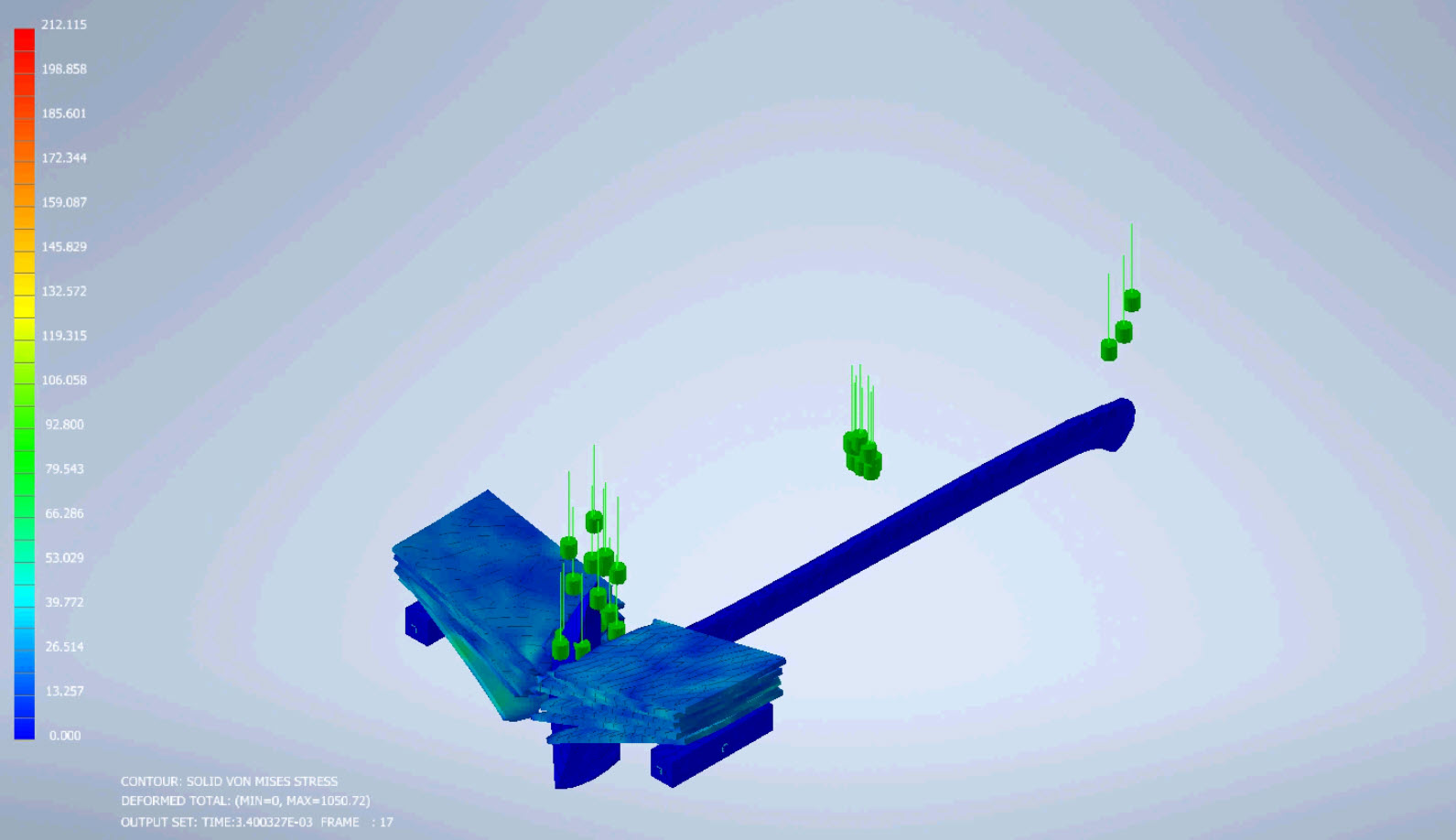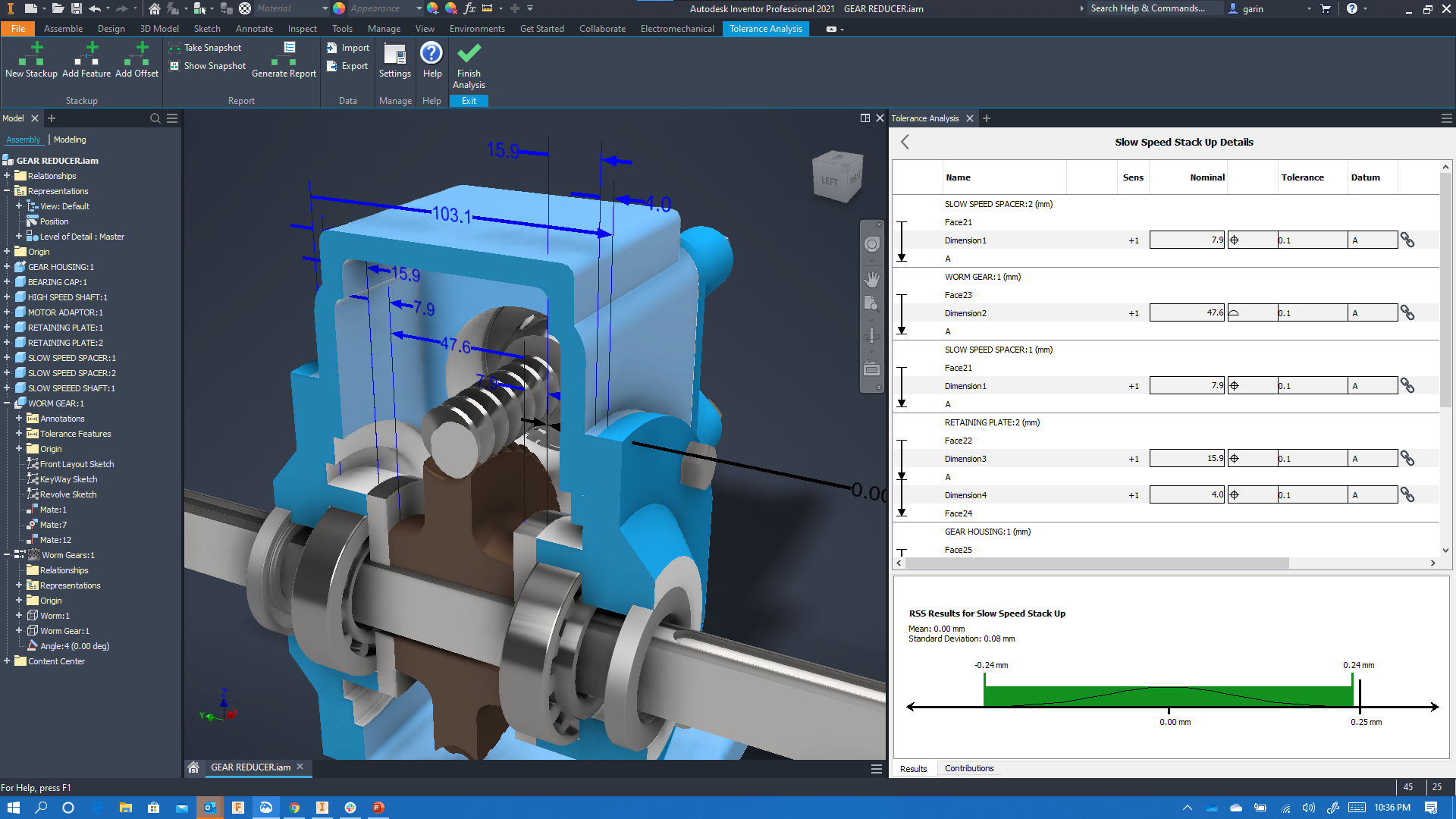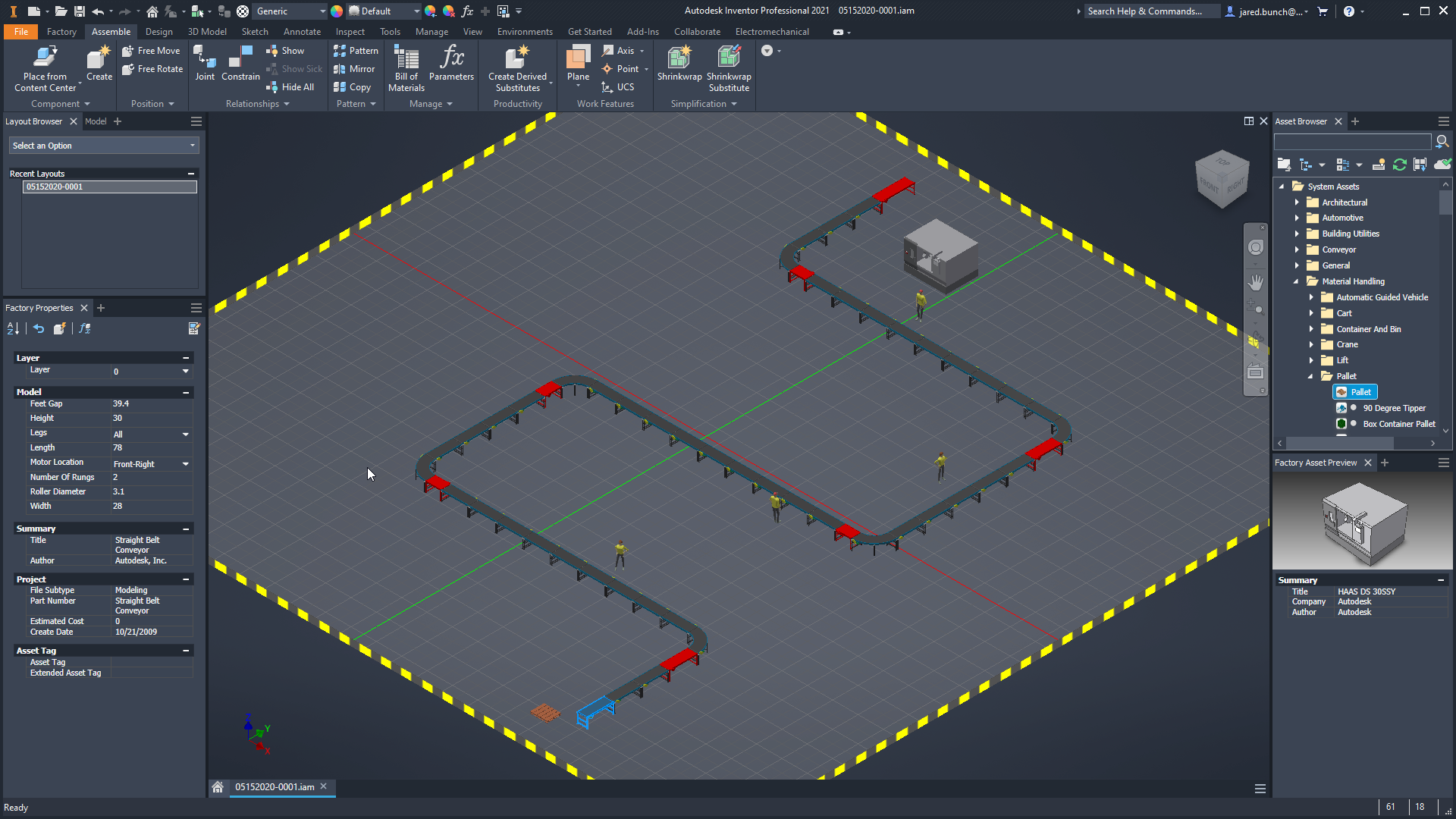
Many of you have likely already seen the What’s New in Inventor 2021 and Public Roadmap Update blog post in March and now we get to talk about what’s new in the Product Design and Manufacturing Collection. As many of you know, PDMC is packed with powerful tools to aid in designing and manufacturing products. As part of the collection, there is a host of products to help with the overall design/manufacturing process like tolerance analysis, simulation, nesting, machining, and of course the collection wouldn’t be complete without AutoCAD and its industry-specific toolsets.
Let us take a look at some of the key enhancements in the Product Design and Manufacturing Collection.
Inventor Nastran
Inventor Nastran provides finite element analysis (FEA) tools for engineers and analysts. Simulation covers multiple analysis types, such as linear and nonlinear stress, dynamics, and heat transfer.

- Explicit Analysis: If you have ever needed to do snap-fit assemblies, drop tests, impact test, or crash simulations you will love this update. Will are thrilled to add Explicit Analysis to our list of supported study types in Inventor Nastran. It is powered by the accurate and trusted Autodesk Explicit Solver and can be used to solve complex explicit dynamics and explicit quasi-static problems.
- General element library – solids (TET4 and TET10), shells (only QUAD4), beams, etc.
- Highly nonlinear materials
- Rigid bodies can be created by assigning a “Rigid” material
- Large deformations and rotations
- Material deletion
- Large arbitrary and evolving contact deformations
- Quasi-static analysis: By Switching the study from Dynamic to Quasi-static (no inertia), you can obtain an approximate Quasi-static solution using the Explicit solver. To obtain an approximate quasi-static solution in our explicit dynamics algorithm we seek to make the magnitudes of the kinetic energy and viscous dissipation in the solution small compared to the magnitude of the internal energy and external work. Autodesk Explicit uses a proprietary algorithm to determine a duration for the simulation that is long enough that the kinetic energy is a small fraction of internal energy. The quasi-static algorithm will automatically scale all the time-dependent load curves for prescribed displacement boundary conditions and loads to fit in the time duration for the quasi-static solution. You are not required to “guess” a duration as Autodesk Explicit will determine this automatically.
Inventor Tolerance Analysis
Inventor Tolerance Analysis allows you to do a 1D tolerance analysis directly on your 3D model. It helps you better understand the impact of mechanical fit and performance based on the cumulative dimensional variation and lets you try various scenarios to find the best fit to reduce machining cost while maintaining proper fit/function.

In this release, we worked on assembly stability issues that contained
- Tolerance Feature annotations
- More Joints than Constraints
We have also blocked renaming components in the Tolerance Analysis environment to prevent a mismatch with the Inventor browser names. Rename faces and edges are allowed.
Inventor CAM
Inventor CAM integrates 2.5-axis to 5-axis milling, turning, and mill-turn capabilities right inside of Inventor. The primary updates to Inventor CAM was around Turning and overall stability/robustness enhancements.

- Turning Profile Roughing: now supports “in computer” compensation for G71 and G72 canned cycles.
In computer (new behavior): This option allows the user to output a canned cycle profile already compensated for the tool nose radius. The benefit of this approach is, the user does not need to enter the tool nose radius compensation at the control.
- Turning Profile Roughing
A new parameter “Retraction Policy” was added to the Linking tab of Turning Profile Roughing operations. This parameter is only available for Inside Profiling mode when the cycle is set to Horizontal Passes and the machining direction is set from Front to Back. This parameter is not available when the Use Canned Cycles parameter is checked on.
When Retraction Policy is set to Minimum Retraction, the tool retracts minimally in Z after every cutting pass up to the Z Clearance value (existing behavior). When this parameter is set to Full Retraction, the tool retracts to Safe Z after every cutting pass (new behavior).

- Profile Roughing Even Depths of Cut
In previous versions, the profile roughing strategy often created shallow cutting passes that resulted in the production of thin chips. The parameter “Even depths of cut” was added to fix this issue. This parameter, when checked on, ensures that every cutting pass creates a chip of even thickness within every machining region inside the machining limits.

User Benefit: If the depth of the cut is shallow, it produces a thinner chip that could curl around an insert and damage the surface finish of the part. Thinner chips also prevent the dissipation of heat from the tool insert, thereby reducing the life of the tool. Generating a toolpath with even depths of cut optimizes the machining process by creating chips of an even thickness which improves the surface finish of the part and increases tool life.
- Parting Reduced Spindle Speed

The parting strategy previously supported a reduced feed rate at a user-specified radius away from the center by turning on the “Use reduced feed” option. Now users can also specify a reduced spindle speed when this option is turned on. Programming a reduced spindle speed just before the part is cut off allows the part to be safely separated from the stock without damaging it.
Factory Design Utilities
Inventor Factory lets you plan and validate factory layouts for the most efficient equipment placement to maximize production performance.

- Support for Dark Theme: Inventor’s Dark theme features a dark blue user interface with a complementary Color Scheme.
- Enforcing “color-controlled” connections: Create a color-assigned connector Asset. Factory now only allows the same color connectors to connect in Inventor and AutoCAD. The green color is a universal color for the connector, which means it will connect to any other color connector, and any other color connector can be connected to a green one. (Parameter propagation still works through connections).
- Reset Connector Color: In order to restore a connector to universal green color, you don’t have to go back inside the color selection dialog to pick the correct green color. Instead, you can reset it to the default color in the context menu.
- Import Asset Properties: Import spreadsheets with asset properties, previously exported from a layout through the Export Properties command, to load back into a layout and apply to the current assets.
For more details, you can review the release notes here.
Inventor Nesting
Inventor Nesting allows you to take sheet metal & flat parts and optimize yield from flat raw material all right inside of Inventor. Nesting studies can be created and then updated to reflect any changes to the design. Easily compare nesting studies to optimize efficiency and reduce costs and export 3D models or DXF™ files of the completed nest for cutting path generation
- Overall usability improvements: ‘Create Nest Study’ and ‘Edit Nest Study’ dialogs are now thematically grouped with a tabbed design to make it more intuitive and easier to use.
- Increased Automation: New option in Create Nest Study: “Automatically Manage Nests” that
- Automatically adds newly created party to the nest in the nesting study
- Creates new nests if a new part is created with a new material that wasn’t used before, or if an existing part is changed to a material that wasn’t previously used.
- Nests will get removed if there are no more objects in the nest
For more details, you can review the release notes here.
AutoCAD
Outside of Inventor and the Inventor products in the collection, AutoCAD is one of the most widely used tools in the Product Design and Manufacturing Collection. With more people working remotely and with the ability to use AutoCAD on virtually any device (desktop, web, mobile) its much easier to get your job done. AutoCAD can also use any cloud (Dropbox, box, OneDrive or Google Drive) to make it even easier to work remotely.
There are some great enhancements in AutoCAD 2001, here are a few of them.
- Drawing History – Compare past and present versions of a drawing and see the evolution of your work
- Xref Compare – See the changes made to your current drawing from changed external references
- Block Palette – View and access your blocks content from AutoCAD on desktop or within the AutoCAD web app
- Performance Enhancement – Experience faster save and install times. Leverage multicore processors for smoother orbit, pan, and zoom operations.
For more details review the AutoCAD What’s New page.

Written by:
Garin Gardiner
Sr. Product Manager
Garin Gardiner is a Sr. Product Manager for the Inventor product line at Autodesk. Garin joined Autodesk in 2005 and has worked in QA, Product Management, and Business Development. Prior to joining Autodesk, he designed roller coasters and worked for an Autodesk Reseller. In his current role, he manages the Nesting Utility and modernization for Inventor.



Add comment
Connect with: Log in
There are no comments